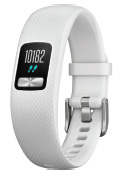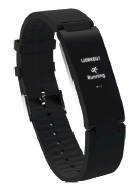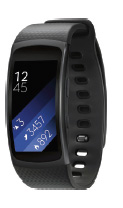How to Pick the Right Fitness Tracker
A fitness tracker is a great tool to help you get serious about keeping active. Designed to be comfortable, easy to use and fashionable—most companies offer a range of bracelet styles in varying colors—fitness trackers (also called sportsbands) can help you track daily and weekly activity levels and ensure your heart rate stays within a safe zone while working out.
More than that, fitness trackers can help motivate you to keep up your new regimen. They provide encouragement that ranges from a virtual coach who delivers voiced approval to game-like scoring systems that reward you for progress and prompt you to share your accomplishments with friends.
But picking the right tracker can be a bit tricky. Sportsbands offer varying features and can differ in price by hundreds of dollars. Begin by identifying the key features you want. If all you need is a device that counts your steps and tracks calories burned, you can get away with spending a lot less. If you want something more advanced—like the ability to track your jogging route via GPS without bringing your phone with you—you’ll pay a lot more. You also should consider details such as battery life—some sportsbands need to be recharged every few days; others come with a replaceable battery that can last up to a year—and the companion app that’s available for your phone. These apps can make a big difference. Some simply organize and present information collected by your tracker. Others provide detailed insights on each of your daily activities, help you set long- term goals and connect you with a network of peers for extra motivation. Typically free, these apps can be downloaded before you buy to get a sense of which tracker and app are right for you.
We’ve rounded up a handful of popular fitness trackers to give you a sense of what’s available. They differ widely in form and function—and we didn’t even get into luxury options, like the Apple Watch—but you can be confident that all of them are designed with one primary purpose: to help you become the healthier, fitter version of yourself that you want to be.
Moov Now - $60One of the most affordable—yet surprisingly robust— fitness trackers currently available, this is a screen-free device that captures your movement and sends it to a smartphone app for analysis. It automatically detects the type of activity you’re performing— swimming, jogging, sit-ups—and provides encouragement and voiced guidance on how to improve your technique. No recharging required, but the battery needs to be replaced every six months. |  |
Garmin vivofit 4 - $80Garmin’s entry-level fitness tracker covers the sportsband basics. It counts steps, tracks distance traveled and calories burned, and monitors your sleep. Its small, non-interactive color screen provides essential information, but to see more details you’ll need to open a companion app on your smartphone. Its biggest selling point is its battery life—up to a year with standard use, at which point you’ll need to replace a pair of little lithium discs. |  |
Fitbit Alta - $100From one of the companies credited with starting the fitness- tracker trend, the Fitbit Alta is a blissfully simple sportsband designed to gently nudge you toward maintaining a healthier lifestyle. It tracks your steps, distance traveled and calories burned; reminds you to get up and move when you’ve been stationary too long; and even tracks your sleeping habits. It connects to your phone, but you also can see key stats on the Alta’s clear touch display. Expect about five days of use per charge. |  |
Withings Pulse HR - $100Withings’ fitness bracelet is focused on your heart. It performs the same functions as other trackers—counting steps, estimating calories burned and keeping tabs on your sleep cycles—but its signature feature is that it monitors your pulse all day, measures beats during specific activities and analyzes changes over the long term. You’ll need to plug it in now and then, but it can run for up to 20 days on a single charge. |  |
Samsung Gear Fit2This more advanced sportsband has a complete set of features. It automatically identifies and tracks your performance in activities ranging from street walking to elliptical training and keeps tabs on your heart for good measure. But it stands out because of its bright and colorful screen with easy-to-read text and a built-in GPS that lets you track your activities and routes without lugging a phone along. The downside: Its rechargeable battery typically drains in just a few days. |  |